- Administrator
- Albums and Singles
 For years, Netherworld's Alessandro Tedeschi has been curating a label that has embraced the cold, frigid minimalism of electronic music. Now via a new sub-label imprint, Iceberg, he has changed the template a bit. While Glacial Movements was a fitting name for the slow drifts of expansive sound, Iceberg fits this debut as a more kinetic, aggressive, and in this case, beat oriented sound.
For years, Netherworld's Alessandro Tedeschi has been curating a label that has embraced the cold, frigid minimalism of electronic music. Now via a new sub-label imprint, Iceberg, he has changed the template a bit. While Glacial Movements was a fitting name for the slow drifts of expansive sound, Iceberg fits this debut as a more kinetic, aggressive, and in this case, beat oriented sound.
Abstract and sparse electronics still heavily feature in Tedeschi's sound throughout the five lengthy pieces that make up Zastrugi.However, while his previous works as Netherworld resulted largely in quiet tones and massive spaces, here there is more than just the inclusion of electronic rhythms.As a whole, there is a perceptible sense of depth to the album that makes it all the more engaging;A sense of space and almost architectural like structure to how almost tangible elements of the mix can be.
On a piece such as "Sérac," spoken word recordings are mixed with a heavy, deep thudding passage of percussion.The second half has him mixing in a collage of harsher, noisier sounds that never push the envelope too far, but is a distinctly different, and rawer edge to it than his wind-swept previous work.The up-front forceful sound also features heavily on "Dry Andes," where an overdriven kick drum thump is pushed loud enough in the mix to almost be painful.The remainder may be echoing noises, clattering distortion and synth expanses, but it does not emphasize subtlety.
A piece such as "Mapsuk" might not be as harsh as some of the others here, but it also does not stay as minimalist as his previous work was.Dense, foghorn like bursts of tone appear, then are transformed into sonar-like pings and deep, cavernous beats.There is a lot of variety throughout, via unidentifiable and broken tones that make up the composition.Tedeschi buries the punchy kick drum far off in the distance on "Bergie Seltzer," with an oddly created white noise approximation for a snare drum adding additional accents.The second half is a bit noisier, but in a light and tasteful way. The concluding "Uikka" has the addition of what sounds like fragmented female vocals with a deep 909 kick.Something that potentially could be a sampled electric guitareven appears in the closing minutes to close the album on a harsher and more aggressive note.
The Glacial Movements label has been rekindling the short-lived isolationist sound movement since its inception, and now it seems that Iceberg is going to revive the minimalist techno sound that followed it.While I would have preferred a greater variation on the rhythms (the ones here stick mostly to the 4/4 kick variety), there is still more than enough diversity on Zastrugi to keep it engaging throughout its entire duration.
samples:
 
Read More
- Administrator
- Albums and Singles
 Young God Records is releasing a Deluxe 3 CD edition of SWANS debut album FILTH May 26 in North America; Mute releases this package in all other territories.
Young God Records is releasing a Deluxe 3 CD edition of SWANS debut album FILTH May 26 in North America; Mute releases this package in all other territories.
Read More
- Administrator
- Albums and Singles
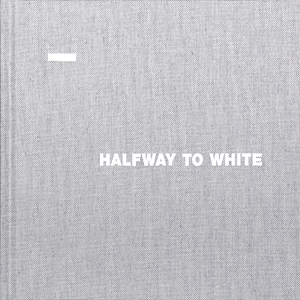 For the inaugural release in their new Folio sub-imprint, Touch has paired Mika Vainio with photographer Joséphine Michel for a joint photography and music project heavily focused on the abstract nature sound and its impact on the other senses and mediums. With heavy use of white exposure on the photographs, and the heavily treated use of white noise on the CD, it culminates in a very strong synthesis of audio and visual.
For the inaugural release in their new Folio sub-imprint, Touch has paired Mika Vainio with photographer Joséphine Michel for a joint photography and music project heavily focused on the abstract nature sound and its impact on the other senses and mediums. With heavy use of white exposure on the photographs, and the heavily treated use of white noise on the CD, it culminates in a very strong synthesis of audio and visual.
Compared to his recent albums, Vainio's audio contributions to this project are more abstract and deconstructed than his busier, often rhythm tinged work.He utilizes expansive passages of silence (white space) amongst blasts of noise and strange frequencies that sound anything but identifiable."Fade from Black," for example, features Mika melding the large passages of silence with heavy, almost imperceptibly low frequencies tones and glassy resonations.
At the conclusion of the album, "White Out," is less rooted in silence but features the same subwoofer destroying bass frequencies.A rising and falling electronic hum from what sounds like processed white noise stays consistent throughout the piece.Towards the end, bits of what sounds like actual melody appear and result in him creating the most traditionally musical sounding piece on the disc.
"Missing a Border" is a noisier excursion, with bits of what almost sounds like a conventional synthesizer heavily processed and demolished.Even though it is one of the more kinetic and noisier pieces, it still never becomes too overwhelming or aggressive, barring the overly shrill ultrasonic bits that sharply cut through.Bleak and moody are the best ways to describe "Notes On the Exposure," a slowly expanding piece of midrange digital noise that is less of a dominating sound.
It is on "Lines of a Curve" that the sound I most associate with Vainio’s body of work.Sequences of pitch bent clicks and pops scatter about, resulting in the loosest semblance of rhythms.Much of the piece is made up of crackly textures, with buzzing noise and silence blended in, and oddly disorienting Doppler effect heavy passages of sound.
Michel’s photography, sourced from a digital camcorder, may differ in its technological nature from Vainio’s analog instruments, but the presentation complements it perfectly.Natural and man-made structures feature heavily in her work, as do candid photographs of people in industrial spaces.While critiquing photography is not at all my forte, her heavily white-drenched digital stills, with odd color artifacting, and often overlaid with found patterns and textures, look as Vainio’s music sounds.
As the Touch label continues into its fourth decade of activity, Halfway to White is a contrast to its early days.While before the label would issue compilations on cassettes paired with small run magazines, now they are working in the media of high quality digital recordings and beautifully bound, art edition quality books.Vainio's and Michel's work compliment each other splendidly on here, and the result is a fully realized collaboration between two distinct and exceptional artists.
samples:
 
Read More
- Administrator
- Albums and Singles
 Since returning to the world of music, ACL's Elden M. has been quite prolific, releasing a batch of new cassettes under his previous noise-associated moniker, while also taking on the world of rhythm-based electronic music as Avellan Cross. Although issued as Allegory Chapel Ltd., GNOSIS: Themes for Rituals Sacred & Profane draws from both of his major projects. Dissonance appears more in a compositional sense, but his use of undistorted synths is largely not something that can be danced to.
Since returning to the world of music, ACL's Elden M. has been quite prolific, releasing a batch of new cassettes under his previous noise-associated moniker, while also taking on the world of rhythm-based electronic music as Avellan Cross. Although issued as Allegory Chapel Ltd., GNOSIS: Themes for Rituals Sacred & Profane draws from both of his major projects. Dissonance appears more in a compositional sense, but his use of undistorted synths is largely not something that can be danced to.
As insinuated by the title, the running theme of ritual; religious and otherwise, appears peppered throughout these four songs.Once again exemplifying his adeptness and composition and creativity, the symbolism is never heavy-handed or blunt.The twinkling synths that appear all over "Machine," mixed with a taped voice that is somewhere between psychology lecture and self-help presentation seem to encapsulate the rituals associated with new age beliefs.
"Solar Rite (For Suspension)" is the other more electronically direct piece on this cassette, and one closer to his work as Avellan Cross.Lead at first by a simple thudding kick beat and wet, heavily phased synth sequences, he morphs it into something almost danceable with added keyboards and snare drum programming.Between the title and the sound, there is a definite neo-pagan ritualistic sensibility to be heard, but wonderfully understated.
The other two pieces are a bit less conventional in sound and instrumentation, but Elden M. never allows it to drift into formless chaos."Sephiroth/Enochian Calls" features more obscured voice samples, but more of a dark and distorted low end synth backing.With that backing, buzzing nasal noises and snippets of Gregorian chant, it has a classical sensibility to it, and throughout the whole piece there is a slow descent into madness, as the overall piece becomes more and more disorienting and oblique.
On the final work, "Mata Jewels (Surah Al Alaq)," he utilizes what sounds like Islamic prayer vocals at a couple different points, all underscored by subtle and tasteful electronics.Based upon the title, the mood leans more towards the sacred than the profane, at least as far as presentation goes.I was very happy when I saw that Elden M. was reentering the world of experimental music with his two major projects, and each bit I have heard has simply solidified this excitement.Each release has lived up to my highest hopes and sounded completely unexpected, yet never has lacked his impeccable sense of structure and composition.
samples:
 
Read More
- Administrator
- Albums and Singles
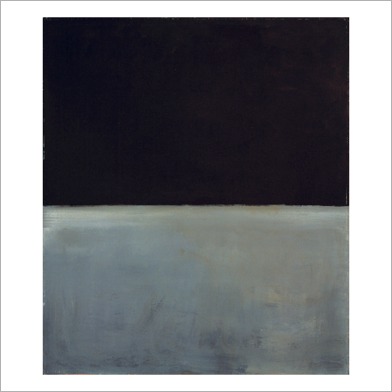
Blues: The Dark Paintings of Mark Rothko is one of Loren Connors' most cherished and sought after albums. Originally released in a handmade edition of 200 or so copies on Connors' own St. Joan imprint in January 1990 under the name Guitar Roberts -- Blues has been unavailable in any form until now.
At time of its release, Connors was still an inscrutable guitarist whose matchless and alien rendering of the blues was just gaining recognition despite more than a dozen solo and collaborative releases since 1978. Connors' classic, song-based In Pittsburgh had only been available for three months when Blues welcomed the new decade with its reformation of the blues as minimalist lines and tone; a compound of influences spanning Louisiana guitarist Robert Pete Williams to painter Mark Rothko.
"Moving with the slow, stately weirdom we expect of Connors' late '80s sound, the music is all shards, all pokes in the eye, as though Rothko's gray scale had exploded, sending shrapnelized paint rocketing through your brain," music historian Byron Coley writes in the liner notes of this reissue. "Just as Connors' notes ricochet hauntedly through its recesses."
For this reissue, engineer Taylor Deupree restored the audio to Connors' specifications of how these seven instrumentals were intended to sound. Cover art is an untitled 1969 Rothko work -- a painting that influenced the album. The original LP jacket is replicated as a glossy inner sleeve. New liner notes by Coley chart Connors' development and the influence Rothko had on him as a guitarist.
More information can be found here.
Read More
- Administrator
- Albums and Singles
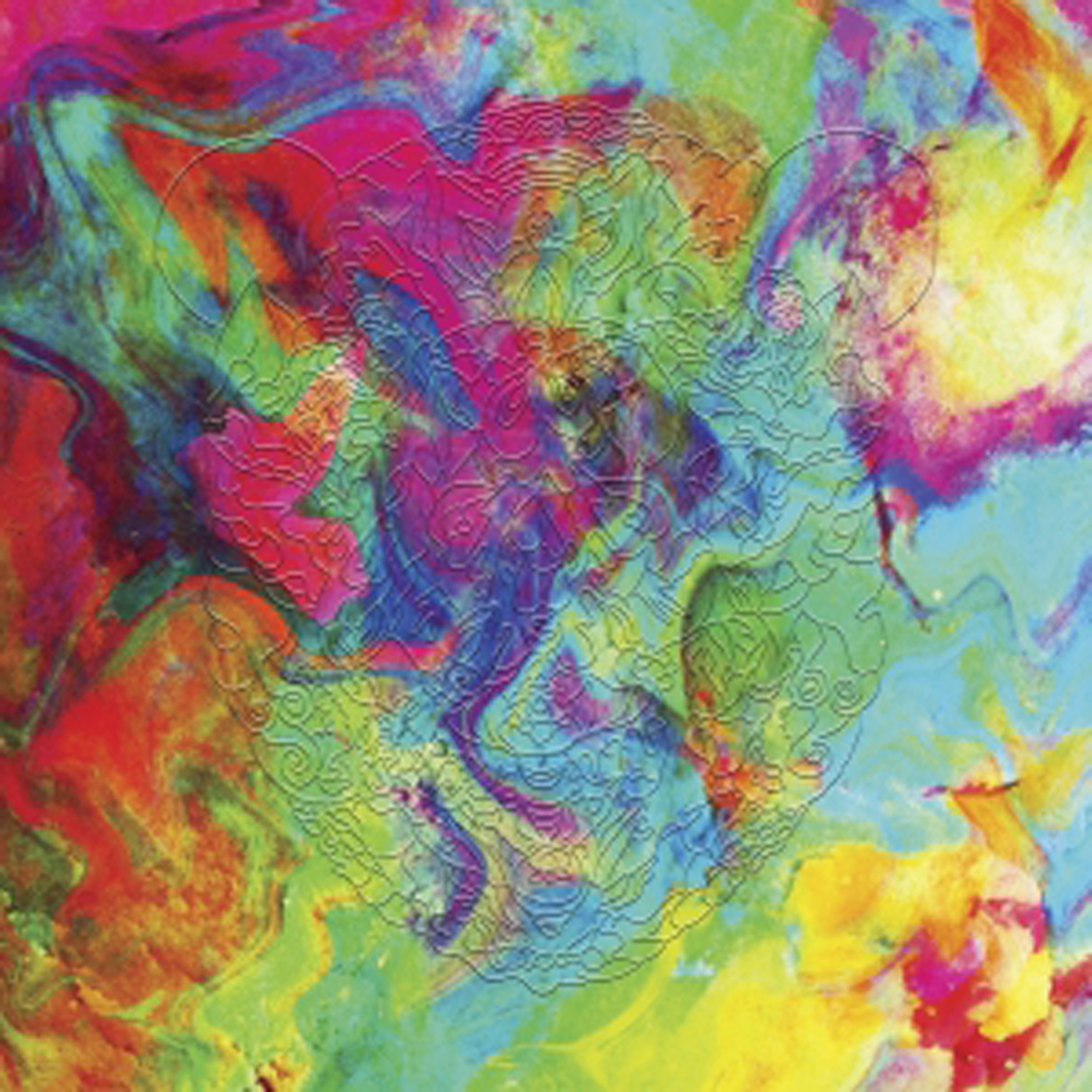 This very odd session was recorded live at Café Oto back in June 2013, pairing Palestine with Grumbling Fur's improv/drone guise for a night of truly bizarre and uncharacteristic fare.  Aside from some occasional vocals, much of the throbbing rustic psychedelia of the excellent first half sounds almost nothing like Charlemagne’s previous work (parts of it even resemble an Acid Mothers Temple-style freak-out).  Then, of course, there is the second half, which sometimes sounds like Steve Reich out of his mind on amphetamines, bashing away at a piano in the middle of a Japanese orgy that disturbingly also includes several sheep and some singing toys.
This very odd session was recorded live at Café Oto back in June 2013, pairing Palestine with Grumbling Fur's improv/drone guise for a night of truly bizarre and uncharacteristic fare.  Aside from some occasional vocals, much of the throbbing rustic psychedelia of the excellent first half sounds almost nothing like Charlemagne’s previous work (parts of it even resemble an Acid Mothers Temple-style freak-out).  Then, of course, there is the second half, which sometimes sounds like Steve Reich out of his mind on amphetamines, bashing away at a piano in the middle of a Japanese orgy that disturbingly also includes several sheep and some singing toys.
Title aside, the unhinged lunacy of Ggrrreeebbbaaammmnnnuuuccckkkaaallloooww!!! actually takes some time to start manifesting itself, as the first half begins in fairly recognizable "Charlemagne Palestine" fashion:  he chant-sings an unusual and nasal melody over a mildly dissonant bed of harmonium and crystalware drones.  In fact, the only real indication that something unusual is afoot is that there is also a chopped-up and pulsing loop undulating around him.  At about the halfway point, however, Palestine's vocals disappear and the piece dissolves into a surreal miasma of recordings of sheep and menacingly dissonance string drones before itself giving way to something that sounds like a fantasia on a Romanian violin melody.  Notably, any sense of structure or purpose is largely gone by this point, but not in a bad way: the song just becomes some weird psychedelic soup of shifting vocals, farm sounds, electronics, tensely sawing strings, toy robots, maniacal vocal howls, and roiling lower-register piano.  Happily, it stays that way until the very end, resulting in quite a pleasantly bizarre piece of music that resembles a deranged mash-up of Acid Mothers Temple, My Cat Is An Alien, and Phurpa.  Any piece that I can say that about is definitely not a boring one.
The second half of the record consists of yet another side-long piece, albeit one in a somewhat different vein.  Thankfully, however, it kicks off with some lingering sheep noises, so the transition was not terribly jarring for me.  In fact, the second piece may even be a continuation of the first piece, but it fades in at a different place than the first half ends, precluding any possible continuity and mysteriously hinting at a portion of the performance that did not make the album.  In any case, the second piece simmers along for awhile as a surreal stew of barnyard noises and wordless vocal drones, but then all the sex noises start up and Palestine churns up a appropriately clangorous racket on his lower keys.  It only escalates from there and it becomes impossible to tell who is doing what anymore, as the piece builds into a cacophony of clattering drums, wildly ascending piano intensity, and plenty of very vocal Japanese women having orgasms.  To their credit, Palestine and Grumbling Fur suddenly revert back to quiet, blearily dissonant droning before it all becomes too overwhelming (arguably, anyway).  The trio has one last perverse surprise up their sleeves though, as the final (post-orgy) moments of the piece are devoted to a rousing crowd sing-along led by Charlemagne's singing toys (Mattel Sing-A-Ma-Jigs, to be specific, in case anyone out there is looking to faithfully cover Ggrrreeebbbaaammmnnnuuuccckkkaaallloooww!!! in its entirety).
I can certainly see why Important wanted to put this out, as it documents a truly bizarre and one-of-a-kind performance.  I certainly wish I had been there.  That said, only the throbbing and hallucinatory middle section of the first half stood out as particularly unique and wonderful for me.  The rest of the album is either too improvised-sounding, too heavy-handed (the orgy), or simply better developed and executed elsewhere on Palestine’s solo Ssingggg album to make a big impact (the farmyard sounds and the singing toys).  In essence, Ggrrreeebbbaaammmnnnuuuccckkkaaallloooww!!! mostly just seems like Charlemagne working through some of his ideas for his next studio album with a couple of talented accompanists gamely trying to keep up with his completely out-sized personality.  I would be very curious to hear what Alexander Tucker and Daniel O’Sullivan could do with a more formal, studio-based collaboration.  Still, this is quite likable for what it is (I normally hate live albums and I do not hate this).  Ultimately, this album is probably just for Palestine completists, but I bet they will probably enjoy it quite a bit.
Samples:
 
 
Read More
- Administrator
- Albums and Singles
 I can always count on Richard Skelton to find the strangest and most unexpected inspirations for his albums and he does not disappoint me with his latest: Belated Movements is largely based upon the "Lindow Man," a well-preserved body found in a peat bog in the ‘80s.  As far as ancient bog bodies go, Lindow Man surely ranks among the most hapless, having met a violent (possibly ritualistic) death by being strangled AND having his throat cut, then getting freeze-died and displayed in a museum two thousand years later.  Given that base material, it is hardly surprising that Movements is a much more sadness-steeped affair than any of Skelton’s other recent work, resembling nothing less than an atypically industrial-damaged and time-stretched requiem.
I can always count on Richard Skelton to find the strangest and most unexpected inspirations for his albums and he does not disappoint me with his latest: Belated Movements is largely based upon the "Lindow Man," a well-preserved body found in a peat bog in the ‘80s.  As far as ancient bog bodies go, Lindow Man surely ranks among the most hapless, having met a violent (possibly ritualistic) death by being strangled AND having his throat cut, then getting freeze-died and displayed in a museum two thousand years later.  Given that base material, it is hardly surprising that Movements is a much more sadness-steeped affair than any of Skelton’s other recent work, resembling nothing less than an atypically industrial-damaged and time-stretched requiem.
I have to admit that I was a bit caught off-guard by this album for a number of reasons.  The primary one is that it plunges wholeheartedly back into the free-floating melancholy that characterized much of Richard’s earlier work.  His more recent work has not exactly been cheery, but his career trajectory has thus far largely been away from gloom and towards something more timeless, vibrant, and organic (albeit with some exceptions, of course).  Also, Belated Movements does not particularly sound like an evolution or continuation of The Inward Circles' debut; rather, it feels kind of like an unrelated one-off project.  The only real thread linking the two is that they focus on Skelton’s more long-form compositions.  In fact, Belated Movements even raises the bar in that regard, dividing its hour-long running time into just three pieces.
The first and longest piece, "Petition for Reinterment," is the album’s funerary centerpiece.  Structurally, it is deceptively simple, as it is based primarily upon an endlessly repeating two-note cello or double-bass drone, though that framework eventually dissolves completely (just like the skeleton of a bog man!).  Later, however, it reappears somewhat changed and essentially carries on to form the basis of the second piece ("To Your Fox-Skin Chorus") as well.  The stated theme of "Petition" is "decay and renewal" and those transformations are largely where the piece’s beauty lies: not much happens melodically at all, but the glacially ebbing and flowing swells undergo some fascinating dynamic and textural changes over the course of the nearly 30-minute running time.  I was actually expecting an escalating rotting and rusting dissonance a la Michael Gordon’s deeply unsettling score for Decasia based upon Skelton's own description of the album, but instead Richard's bowed strings get increasing overloaded and blown-out sounding, as well as embellished with some grindingly metallic textures and quavering dissonances.  It all gets quite heavy and nightmarish by the time it reaches its crescendo.  That said, it is quite a slow-burning and nuanced piece, so it takes some focused attention to fully appreciate its dark majesty.  Without headphones or high volume, it loses a lot of its power.
The shorter "To Your Fox-Skin Chorus" is not radically different, but sounds a lot more metallic and industrial: there is a constant looping throb and some of Skelton’s bowed strings have an atypically harsh and more reverberant texture, like they were recorded in an empty parking garage or factory.  Those more menacing elements are balanced by something that sounds like recurring classical horn loop that makes the piece feel like a Ravel performance bleeding into a noise show held in a sewer or cavern, which is quite an appealing niche.  Eventually, "Chorus" segues into the closing "Canis, Lynx, Ursus," which makes Belated Movements feel like one single epic piece rather than three discrete ones.  "Canis" ultimately divulges quite a bit from the rest of the album, however, as its slow-motion bowed strings gradually blossom into a somber, descending piano motif.  To my ears, Skelton lays on the sadness a bit too thick for his own good, but he almost overcomes that fundamental problem by embellishing the central melody with a periphery that is a singularly Richard Skelton-esque tour de force: a churning thicket of moaning and howling strings and sharp harmonics that gradually swells to a roaring intensity.  Sadly, it never gets quite loud enough to fully drown out the piano, but it is still quite a visceral and beautiful way to end the album.
As far as recent Richard Skelton albums go, this is solid, but it falls a bit short of his truly top-shelf material: there is nothing on Belated Movements that comes close to rivaling pieces like the instantly gratifying, stone-cold brilliance of Nimrod’s "Two Opposed Leaves" or Succession’s "Relics."  Also, the oppressive sadness of "Canis, Lynx, Ursus" drags down an otherwise spectacular piece–if not the entire album, given how the three sections blur together.  That said, Skelton has long been one of my favorite artists, so I basically expect him to exclusively churn out masterpieces forever, which is completely unreasonable.  While I do not expect that mindset to change anytime soon, I can certainly accept that it colors my judgment somewhat pessimistically at times.  Despite my grumblings, Belated Movements is a perfectly fine album and takes an ambitious stylistic detour, as this is an unusually long-form and melodically minimalist album and I always love to see Skelton trying new things rather than repeating himself.  New fans would be better served by starting elsewhere, but longtime fans will definitely find plenty to enjoy here (if "enjoy" is truly the right word for elegiac meditations on the fox as psychopomp or the extinction of the lynx).
 
Read More
- Administrator
- Albums and Singles
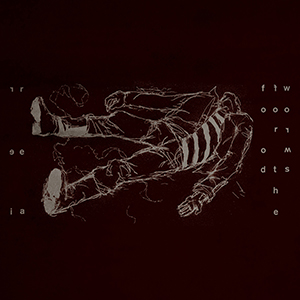 A reissue of a previously limited self-released cassette, the newest release from Christian Dubé is as uplifting as its title. While it might be (extremely) dark, it is also an exceptionally well done melding of clattering rhythms and harsh electronics dissonance that clearly pays homage to the two genres’ innovators, but the sound is anything but a direct copy.
A reissue of a previously limited self-released cassette, the newest release from Christian Dubé is as uplifting as its title. While it might be (extremely) dark, it is also an exceptionally well done melding of clattering rhythms and harsh electronics dissonance that clearly pays homage to the two genres’ innovators, but the sound is anything but a direct copy.
Dubé’s employment of percussion, at times sounding like processed drum machine, at others improvised metal banging, results in the most memorable pieces on this tape.The stylistic nature of these rhythm based pieces resulted in them being my favorites, reminding me of music I grew up with while still being fresh.For example:the heavily processed, big crashing rhythms of "War Rat" result in a brilliant blend of compelling rhythms and sinister bass sounds that have an obvious song-like structure, but have a far less conventional sound.
On the other side of the cassette, "Garry Membrain" features lo-fi hyper-kinetic drum programming and more overt, untreated keyboard sounds.Even amongst the others on this tape, this is one of the peak aggressive and creepy moments, with the second half loosing the otherwise taut structure of the piece and instead allowing it to sprawl out wonderfully.
The other style that Rei Rea heavily draws from, harsh electronics, appears on the album via passages of loud electronic noise and unrecognizable, harsh vocals.The aforementioned "War Rat" features what I assume is his voice, but processed and unintelligible to end up sounding more like any other instrument.Voices also appear on the clang-heavy "Torture Well," which sounds like Dubé playing a bass guitar as a percussion instrument in lieu of traditional rhythms.With the sampled screams and free form, deafening drone that concludes the piece, I felt hints of the earliest (and best) Dissecting Table coming out of the song.
The two concluding pieces are less forceful, instead having a dreary, rhythmless throb to them."Giant" sounds as if it is constructed from a droning cello or synth string passage, run through a wide variety of delay effects.While the elements may be basic, Dubé does quite a bit with them and the whole is certainly greater than the sum of its parts.The final "Scoff" follows a similar blueprint, being heavily steeped in expansive strings.Here the low end frequencies are emphasized and layered, resulting in a rich, thick piece that has just the right level of eerie.
Between the stiff, inorganic sounding drums, overdriven synths and indecipherable vocals, Rei Rea's influences are recognizable, yet he never even comes close to direct emulation.Food for the Worms is bleak, depressing, and harsh, and does those themes exceptionally well, embracing just the right level of terror without crossing into self-parody.As everything I have heard from him, Food For the Worms is another exceptionally strong piece of music.
samples:
 
Read More
- Administrator
- Albums and Singles
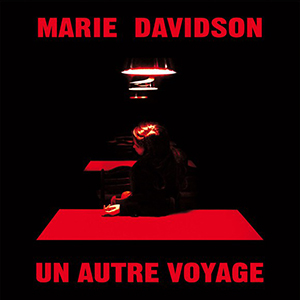 Since beginning her solo career in 2012, Un Autre Voyage (Another Journey) is Marie Davidson's third album, and even at this relatively young stage in her career shows marked development. Presented as a largely spoken word work (in French) of her personal experiences, there is a greater variety of emotions than the more depressive sounds of her earlier works, which comes through even absent the lyrics.
Since beginning her solo career in 2012, Un Autre Voyage (Another Journey) is Marie Davidson's third album, and even at this relatively young stage in her career shows marked development. Presented as a largely spoken word work (in French) of her personal experiences, there is a greater variety of emotions than the more depressive sounds of her earlier works, which comes through even absent the lyrics.
Davidson's extensive use of drum machines and vintage synthesizers surely earns a place in some sub-sub -wave genre that may or may not have been invented as of yet, but this is one of those cases where that approach comes together quite well.With its simple, throbbing rhythm and French spoken word vocals, "Boulevard Taschereau" made me feel a bit of commonality with Suicide's Why Be Blue or A Way of Life, with its similar sense of repetition mixed with a similar level of instrumental technology.
"Excès de Vitesse" sits more in a standard "new wave" template, with its metallic echo laden drum programming and basic, but effective synth sequences defining most of the song.At times it does sound a bit TOO rooted in its 1980s nostalgia, but the catchy bass pattern makes it memorable.The high point for me is "Balade aux USA," in which all of these elements come together brilliantly.Solid drum machine beats, twinkling synth leads, guitar (courtesy of Davidson's partner and bandmate in Essaie Pas, Pierre Guerineau), and singing, rather than spoken word, results in a strong, memorable bit of off kilter pop.
The other half of this album’s six songs has Davidson in a less pop and more introspective mood.There is a distinct heaviness around "Kidnap You in the Desert," led by a pulsing murky opening and fragments of voice rather than traditional vocals."Insomnie" also drops the drums and results in a lighter overall mood and effective, but simple melody compared to some of the thicker, more overbearing elements of the record.
Both the pop and abstract sensibilities dovetail together in the concluding "Perséphone."Starting from a foreboding introduction and heavy kick drum, Davidson adds in a simple but perfect bass synth pattern.Both Guerineau and Davidson provide spoken word vocals, and the addition of an organ passage pushes it into very melodramatic territory.
While at times Un Autre Voyage sounds a bit too attached to its 1980s trappings, it more often than not works extremely well with that distinct sound.I personally prefer sung to spoken word vocals, so the moments where they appeared here were the ones I felt most engaging.Even with the spoken word pieces, however, the music Davidson created was more than enough to make them still click well with me.
samples:
 
Read More
- Administrator
- Albums and Singles
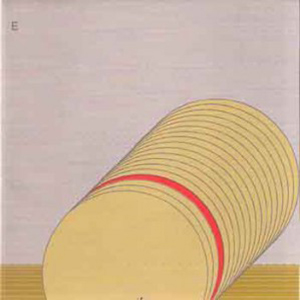 Down to the final three releases in Die Stadt and Auf Abwegen’s expansive reissue program, E is a collaborative album originally issued on the Dom label in 1988. Having moved past his synth heavy industrial din but before fully embracing avant garde experimental sounds, it is a transitional record that hints at late 1980s digital synth pop, as well as pure dissonance. At times it may seem a bit too dated by the technology used, but as a whole the album is another strong entry in Tietchens' catalog.
Down to the final three releases in Die Stadt and Auf Abwegen’s expansive reissue program, E is a collaborative album originally issued on the Dom label in 1988. Having moved past his synth heavy industrial din but before fully embracing avant garde experimental sounds, it is a transitional record that hints at late 1980s digital synth pop, as well as pure dissonance. At times it may seem a bit too dated by the technology used, but as a whole the album is another strong entry in Tietchens' catalog.
Tietchens and Bekker (who appeared on most of Tietchens' releases, but not credited as an equal partner) not only have a transitional sound on E, but it also features liberal application of Tietchens' more playful and absurd side.The album's high point in my opinion, "Musik Im Deutschen Imbiss," begins with plucked strings and percussive sounds that reek of late 1980s digital synth technology.Where it excels is that it begins sounding like a TV sitcom opening theme, transitions into a passage of simulated gunfire and screams, and then back again.It is an odd, and slightly disturbing juxtaposition.
"Patterns" is another piece where the sound is a bit more surreal and in this case playful.The opening wood block percussion is oddly non-electronic in sound, but has the complexity of something programmed, rather than played.After about the halfway point, a jaunty bit of organ is added to the mix, resulting in an strange paring of sounds and more than just a bit of silliness.
At times, however, it is difficult to tell what is supposed to be absurdism and what is just the side effect of heavily dated technology.The canned string sounds of "Kinematograph" and stiff piano hint at a dramatic sense of tension, but those basic sounds just never quite get it there.The heavy use of digital synth horns and sounds on "Zu Traurigem Behuf" are intended to convey sadness I would assume, but the canned nature of the sounds feel cliché and insincere.
Of course Tietchens and Bekker push the experimental envelope as well, and in some unexpected ways."Studie für Bassklarinette und Zuspielband" has some uncharacteristic squawking jazz moments via the clarinet, but it is also played in ways that more appropriately sound like shrill sirens and droning fog horns.Compared to much of his work it is rather organic, with the only overt electronics being the subtle, manipulated backing tape."Sphinkter" is a short bit of skittering noises and strange filtering that has the chiptunes sound, but predates that movement by a few decades.
Like most of these reissues, there is some additional previously unreleased material included.Of these two songs, "You Get What You Hear" is a short piece of weird spoken voices, clattering noises and heavily rumbling bass.It harkens back to Tietchens' work for the Discos Geometricos label, but even a bit more bizarre."Abendliche Stimmen" is more unsettling, resembling heavily processed and treated bits of chorus vocals bent and pulled into something completely sinister.They may be recorded during the same era, but both pieces have a distinctly different character to them that would have been out of place on the album proper.
The very obvious moments of General MIDI level sounds that appear on some of the pieces throughout E may have had an unintended effect on me, as I felt that, 25+ years later, the sound was more silly and quaint rather than daring.But even with that excluded, the remaining, more experimental pieces stand up with any of Tietchens' best work.While I have always favored his more industrial sounds and thus I found myself enjoying those pieces the most on here, the whole disc is a great one.
samples:
 
Read More
- Administrator
- Albums and Singles
 I am a fairly passionate Charlemagne Palestine fan, but it must be noted that my love is a very complicated and highly conditional one. I tend to enjoy his music in spite of his eccentricities rather than because of them (they can be quite grating at times).  Consequently, I went into this album with no small amount of trepidation, as there were three red flags right off the bat: 1.) a ridiculous title, 2.) something resembling the word "sing," and 3.) a record label that I was completely unfamiliar with in Idiosyncratics.  Also, the nasal a cappella opening seemed to instantly confirm those misgivings.  Consequently, I was absolutely knocked sideways when Ssingggg then unexpectedly blossomed into an apocalyptic monster of a crescendo.  At the risk of sounding crazy, I believe this easily rivals all of Palestine's previous career highlights.  Also, as far as I am concerned, this is a strong (albeit dangerously early) Album of the Year contender.  I am confident that history will vindicate me.
I am a fairly passionate Charlemagne Palestine fan, but it must be noted that my love is a very complicated and highly conditional one. I tend to enjoy his music in spite of his eccentricities rather than because of them (they can be quite grating at times).  Consequently, I went into this album with no small amount of trepidation, as there were three red flags right off the bat: 1.) a ridiculous title, 2.) something resembling the word "sing," and 3.) a record label that I was completely unfamiliar with in Idiosyncratics.  Also, the nasal a cappella opening seemed to instantly confirm those misgivings.  Consequently, I was absolutely knocked sideways when Ssingggg then unexpectedly blossomed into an apocalyptic monster of a crescendo.  At the risk of sounding crazy, I believe this easily rivals all of Palestine's previous career highlights.  Also, as far as I am concerned, this is a strong (albeit dangerously early) Album of the Year contender.  I am confident that history will vindicate me.
There truly has never been anyone else quite like Charlemagne Palestine and there presumably never will be, as I consistently find myself unable to comprehend his various artistic decisions or guess where any of his pieces are ultimately headed.  Each new album is a fresh surprise.  Ssingggg is a prime example of that singularly unpredictable, enigmatic, and somewhat self-sabotaging nature, as it opens with little more than the hum from a rubbed glass and some high-pitched quasi-ritualistic drone-singing.  Gradually, a massive, buzzing, and complexly dissonant organ chord swells into the picture, forming the perfect backdrop for Palestine's ominous and maniacal anti-mass…until his wordless chants begin to cohere into the word "sing" and–later–the phrase "I love to sing," thus dissipating the mysterious, haunting spell and making me briefly grimace with exasperation.  It is almost like he suddenly thought "Oh dear, this is getting much too great, much too soon.  I need to do something conspicuously silly fast."  Of course, an alternate possibility is that Palestine was trying to make some sort of commentary on the shifting meaningfulness/meaninglessness of language.  Or that (more likely) he was just guilelessly, earnestly, and totally unselfconsciously absorbed in his music.  Regardless of the intent, it was a curiously wrong-footing and distracting move.
Of course, the flipside of Palestine's prickly oddity is his outsider brilliance, which deceptively manifests itself through the massing, swelling, and complexly harmonizing organ drone that continues to grow even as the melodic foreground takes its strange turns.  Essentially, Charlemagne is a master magician engaged in a prolonged bit of artful misdirection, distracting me with parlor tricks (and possibly a kazoo) while the skies darken unnoticed in preparation for the storm to end all storms.  That threatened storm finally hits around the 20-minute mark and can only be described as all hell breaking loose (in the best way possible).  While the organ continues to drone on, Palestine unleashes a truly epic tape onslaught, as martial drums, sheep, choirs, political rallies, squealing children, the entire population of a rainforest, and an actual massive thunderstorm all bleed together into a buzzing, crushing maelstrom that sounds like the entire history of the world condensed into one brilliantly hallucinatory, brain-melting cacophony.  Then, after about half an hour of sustained phantasmagoric perfection, it all suddenly vanishes into silence, leaving only the lonely hum of a wet finger circling around a glass.  That is where I would expect the piece to logically end, of course, but instead it blossoms into a surreal coda involving a singing toy performing a duet with Charlemagne, which concludes with both the toy and the artist saying "bye bye."  The resulting sensation is probably not unlike staggering out of a war zone and suddenly finding oneself on the set of The Muppet Show.
Experienced on headphones, Ssingggg is a legitimately visceral, harrowing, maximalist, and synapse-frying experience; the sort of thing that qualifies more as a life event than entertainment.  I truly cannot say enough great things about how wild, ambitious, bewildering, and masterfully executed this album is. Ssingggg is Charlemagne Palestine's "mic drop" moment: this vein is done; there is no reason for him or anyone else to ever attempt something like this ever again, as it is unquestionably the last word in whatever the hell it is.  If life were a movie, Palestine would be on a boat somewhere right now, content that he has conclusively realized his destiny and never needs to make another album ever again.  Since it is not, however, I am sure he will resurface with something completely different in like a month (and I will presumably be surprised again).
 
Read More

